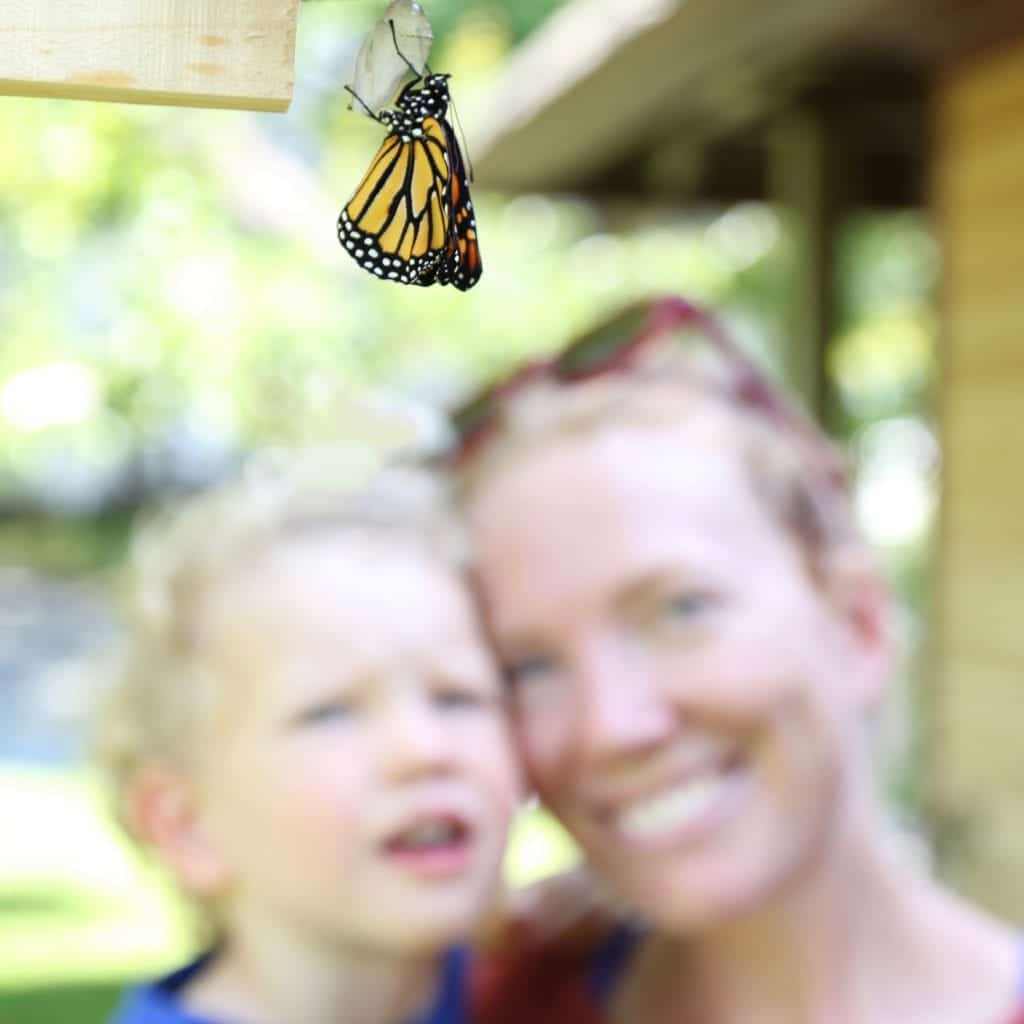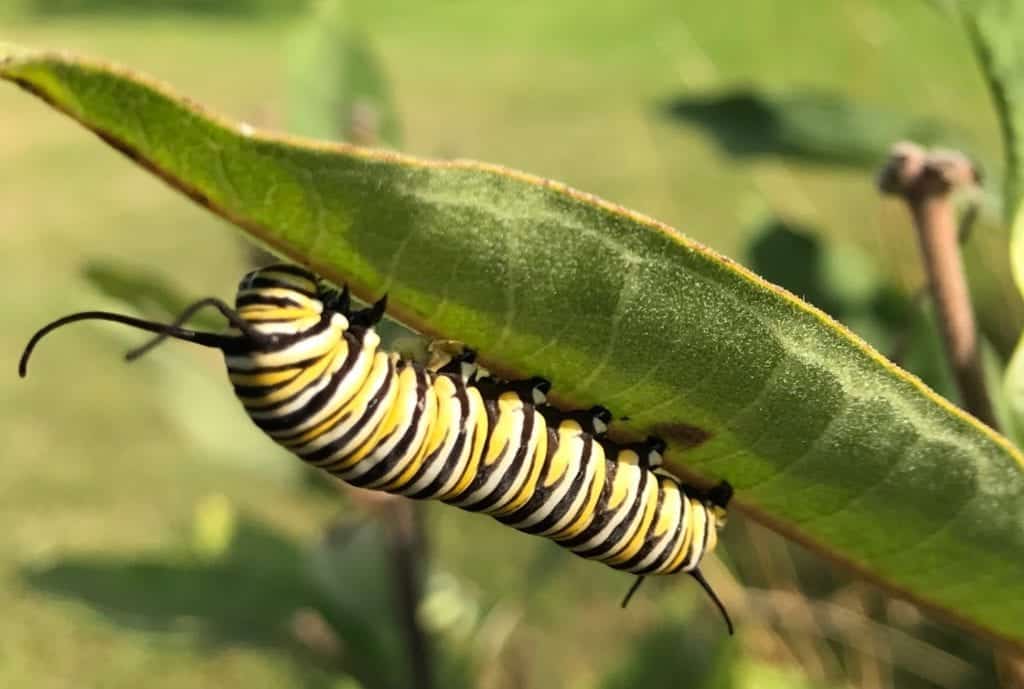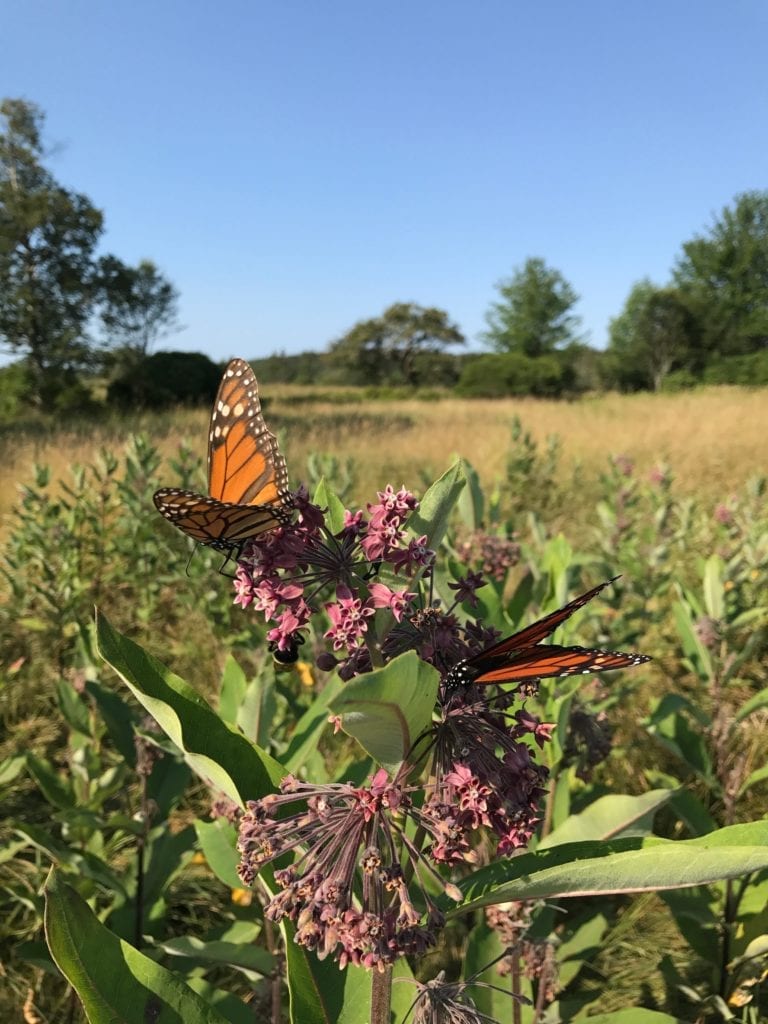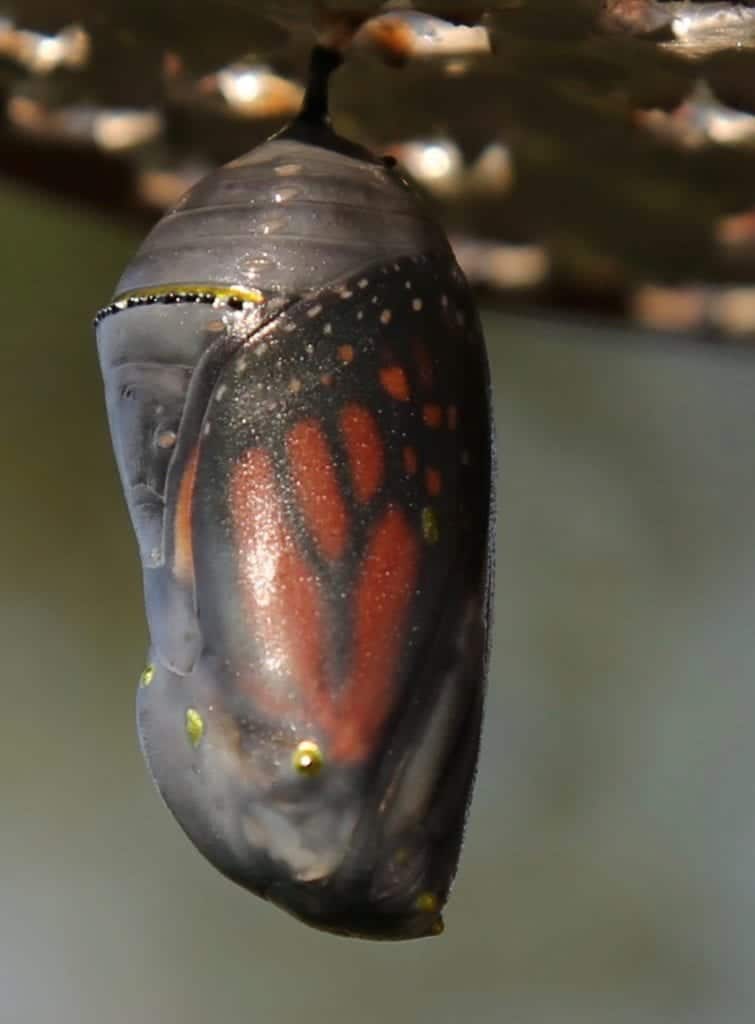
After three years of raising monarchs from eggs and caterpillars here in Maine, the Lambert family followed the Monarchs south to Mexico to see the next stage in their life-cycle. Here are some reflections from the metamorphosis and migration of Monarchs:
At a time when Earth calls on human culture to transform to survive, monarchs are mentors in metamorphosis. They are the embodiment of radical transformation, of the impossible rendered possible, of intergenerational patience, and of magic made real.
Growing up in Falmouth, Maine, I delighted in the bright caterpillars tirelessly chomping on the milkweed near our house. With parental help, I gently plucked a soft squishy body from a leaf and brought it home to raise in a jar. I remember the butterfly that emerged, hanging in its majestic splendor.

I also remember the long years without monarchs. Not one. I chased after every orange butterfly in frustration, hoping my eyes deceived me; I thought they were gone for good.
Then three summers ago, when the milkweed took off at our summer home near Mount Desert, so did the monarchs, lilting round the milkweed’s fragrant flowers. My oldest son Sylvan was two at the time, and we lifted every leaf. There! A tiny little caterpillar! There! A minuscule egg! They had given us a second chance, so we took them home to increase theirs through the safety of captivity.
It’s nice to blame it on the kids, but it’s me who is obsessed with monarchs. Butterflies, chrysalides and caterpillars regularly inhabit my dreams. While Sylvan (now five) will share the anatomically correct names for caterpillar parts, I’ll gladly share every stage of transformation and all its symbolic beauty.

From Caterpillar to Chrysalis:
Most people believe that to undergo the transformation from caterpillar to butterfly, monarch caterpillars build a chrysalis (a pupa) out of some other material. I believed this too, until we turned our backs on a caterpillar for ten minutes, and when we looked back, it was a chrysalis! Confused, we searched the Internet for answers, and came across this video (We’ve now seen this a number of times with our own eyes.)
The caterpillar, which over the course of a half-day of hanging has already begun an inner transformation, sheds its skin, legs, head and tentacles to reveal a chrysalis inside.
The Youtube comments say it all: ridiculously amazing, deeply disturbing, looks painful, how in the world do they keep from falling?, compelling, meditative, I might have nightmares tonight, I wonder how it manages to shed its face?
Could we humans have the patience to trust what is growing inside ourselves, to let the unknown become us, to be still and listen to our inner nature long enough that it grows strong and whole? Could we, too, surrender to an indeterminate threshold – no longer what we were and not yet what we will become? Could we dare to shed what the world knows of us and emerge in some new form?
In the words of the poet David Whyte –
I look out
at everything
growing so wild
and faithfully beneath
the sky
and wonder
why we are the one
terrible
part of creation
privileged
to refuse our flowering.

From Chrysalis to Butterfly
The caterpillar wriggles and writhes to detach its former incarnation, and then it firms up into a smooth, hard chrysalis. It must be green to hide from predators, but why is it bedazzled? Golden dots adorn its bright green. This necklace of gold grows in beauty as the green blackens and turns transparent, revealing a tapestry of orange wings beneath a clear shell.
Inside the beauty, the pupa uses its own digestive juices to break down its former being, while pre-programmed “imaginal disks” grow into the parts of a butterfly. People used to believe that if you break open a chrysalis at this stage, you would see neither caterpillar nor butterfly but mush or goo. That’s not entirely true, however; later research revealed that the part of the gut, tracheal system (lungs) and central nervous system remain intact (butterflies can remember things they learned as caterpillars). (For more information click here.)
While the chrysalis appears dormant from the outside, inside it is fervently transformative. I remind myself of this when I’m called to sit by a stream and do nothing. Still from the outside, I consolidate, dissolve, generate and transform.
This metamorphosis cannot be rushed. The chrysalis requires the full length of its days or it will not emerge as a butterfly. The womb-like beauty of this process reminds us that true transformation requires a sense of safety, stillness, time and imagination. It is also unsettling. It requires disintegration.
All those sweet flowers calling, and the freedom of wings and air! And yet the newly emerged monarch is patient, hanging for hours as her wings expand and dry. She cannot fly until she fully fills her new form.
Click here for Part II, featuring the Lamberts’ incredible visit to Mexico.
